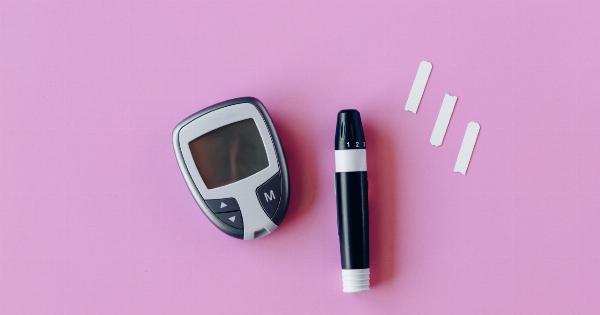Diabetes affects millions of people worldwide. While there is no cure for the condition, lifestyle changes such as exercise can help manage it. However, not all exercise routines are created equal when it comes to diabetes management.
In this article, we will discuss exercise strategies that will help you manage diabetes effectively.
Understanding Diabetes
Diabetes is a metabolic disorder that affects how your body processes glucose. Glucose is the primary source of energy in your body, obtained from the food you eat. The glucose is transported through the bloodstream to the cells that use it.
However, for the glucose to enter the cells, it needs a hormone called insulin. In diabetes, your body either doesn’t produce enough insulin or cannot efficiently use the insulin it produces, leading to high blood sugar levels, which can damage organs over time.
Type 1 diabetes is an autoimmune condition where the body attacks and destroys insulin-producing cells in the pancreas. People with type 1 diabetes need insulin therapy to survive.
On the other hand, in type 2 diabetes, the body becomes resistant to insulin’s action, leading to high blood glucose levels. Type 2 diabetes is more common and can be managed with lifestyle changes, including diet and exercise.
Benefits of Exercise in Diabetes Management
Exercise is a natural way to lower blood glucose levels. When you engage in physical activity, your muscles use glucose for energy, reducing the amount of glucose in the bloodstream.
Exercise also makes the body more sensitive to insulin’s effects, making it easier for glucose to move from the bloodstream into the cells.
Regular exercise also helps to reduce stress levels, lower blood pressure, and improve blood lipid levels, all of which are essential for managing diabetes.
Exercise can also help with weight management, as excess body weight is a risk factor for type 2 diabetes.
Types of Exercise for Diabetes Management
When it comes to exercise, different types of physical activity offer different benefits. Therefore, it is essential to engage in diverse types of activities to get the most significant benefits.
Here are some exercises that can help manage diabetes effectively:.
Aerobic Exercise
Also called cardio exercise, aerobic exercise involves continuous activity that gets your heart rate up. Examples of aerobic exercise include cycling, running, swimming, and brisk walking.
Aerobic exercise helps lower blood glucose levels, improve cardiovascular health, and reduce the risk of other chronic diseases. Generally, aim to engage in at least 150 minutes of moderate-intensity aerobic exercise per week, spread across at least three days.
Resistance Exercise
Resistance exercise, also known as strength or weight-bearing training, involves using weights or resistance bands to build and strengthen muscles.
Resistance training can help improve insulin sensitivity, promote weight loss, increase bone density, and boost overall health and fitness. Resistance exercise should be done at least two times a week, targeting all the major muscle groups.
High-Intensity Interval Training
High-intensity interval training (HIIT) involves alternating short bursts of intense activity with periods of rest or low-intensity exercise.
HIIT workouts are known to be time-efficient and have been shown to help lower blood glucose levels, improve insulin sensitivity, and increase cardiovascular fitness. HIIT training can be done with various activities, including cycling, running, or bodyweight exercises.
Timing Your Exercise with Diabetes
Timing your exercise is as crucial as the type of exercise you choose. Here are some strategies to help you time your exercise effectively:.
Talk to Your Doctor
If you have diabetes, it’s essential to consult with your doctor before starting an exercise program.
Your doctor will evaluate your current health status, prescribe exercise guidelines that are right for you, and help you monitor your blood glucose levels and medication regimen as you progress.
Check Your Blood Glucose Levels
It’s crucial to check your blood glucose levels before, during, and after exercise to know how your body responds to different types of activities.
If your blood glucose levels are too high or too low, you may need to adjust your medication or the type and intensity of exercise you do. Generally, aim for a blood glucose level between 100-250 mg/dl before exercising.
Avoid Peak Insulin Action Time
If you take insulin, you should avoid exercising during the peak insulin action time. This is the time when the insulin is most active in your body, and blood glucose levels are low.
Exercising during this time can lead to hypoglycemia (low blood glucose levels). Speak with your doctor about the best time to exercise based on your insulin regimen.
Carry Glucose Supplements During Exercise
During exercise, your body burns glucose for energy, which can lead to low blood glucose levels, especially if you take insulin or other diabetes medication.
It’s crucial to carry glucose supplements such as candies, fruit juice, or glucose gel to keep your blood glucose levels in check during exercise.
Stay Hydrated
When you exercise, you lose fluids through sweat, which can lead to dehydration. Dehydration can cause blood glucose levels to rise, leading to hyperglycemia (high blood glucose levels).
It’s crucial to drink enough water before, during and after exercise, especially if you have type 2 diabetes.
In Conclusion
Exercise is an essential component of diabetes management.
Engaging in different types of exercise, including aerobic, resistance, and HIIT training, can help lower blood glucose levels, improve insulin sensitivity, and promote overall health and fitness. Timing your exercise is equally crucial, and it’s essential to consult with your doctor before starting an exercise program.
Be sure to stay hydrated, check your blood glucose levels, and carry glucose supplements during exercise to avoid complications related to diabetes.































